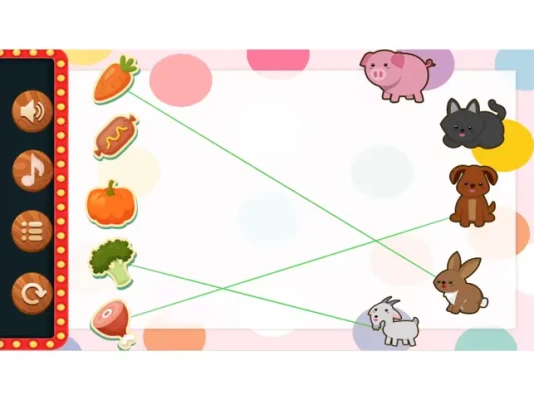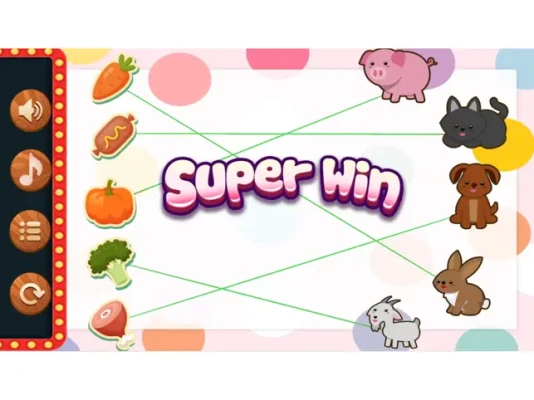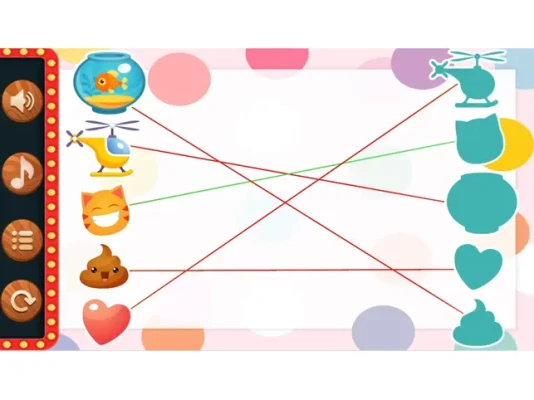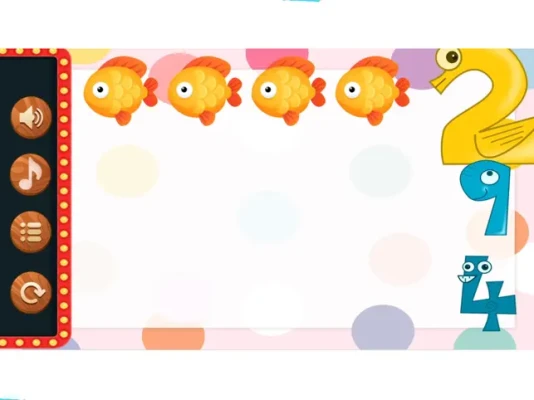
Latest Version
1.1
May 05, 2025
Kids Match - Game
Games
iOS
29.1 MB
0
Free
Report a Problem
More About Kids Match - Game
Unlock Your Child's Potential: The Ultimate Guide to Matching Activities for Kids
In today's fast-paced world, nurturing your child's cognitive development is more important than ever. Engaging them in matching activities can significantly enhance their learning experience. This article explores the myriad benefits of matching exercises, providing you with insights on how to effectively implement them in your child's daily routine.
Enhance Cognitive Skills Through Matching Activities
Matching activities are not just fun; they are essential tools for developing critical thinking skills in children. By encouraging your kids to match numbers, patterns, shapes, and objects, you help them build a strong foundation for future learning. These exercises stimulate their minds and promote analytical thinking, which is crucial for problem-solving.
Classic Matching Worksheets: A Timeless Educational Resource
Classic matching worksheets cover a variety of topics, making them versatile educational resources. These worksheets can be tailored to suit different age groups and learning levels, ensuring that every child can benefit from them. By incorporating these worksheets into your child's study routine, you can create a structured learning environment that fosters growth and curiosity.
Boost Critical Thinking Skills
Matching exercises challenge children to think critically as they search for pairs of related items. This process not only enhances their cognitive abilities but also encourages them to develop problem-solving skills. As they identify and connect matching pairs, they learn to analyze relationships between different objects, which is a vital skill in both academic and real-world scenarios.
Fostering Good Study Habits
Engaging in matching activities helps cultivate good study habits in toddlers and young children. By introducing these exercises early on, you instill a sense of discipline and focus in your child. This foundation will serve them well as they progress through their educational journey, leading to improved reading comprehension and overall academic performance.
Develop Fine Motor Skills
Matching activities are not only beneficial for cognitive development; they also promote fine motor skills. As children draw lines to connect matching pairs, they practice hand-eye coordination and dexterity. These skills are essential for various tasks, including writing, drawing, and even everyday activities like buttoning shirts or tying shoelaces.
Strengthening Visual Discrimination Skills
Visual discrimination is the ability to differentiate between various shapes, colors, and patterns. Matching exercises help children strengthen these skills, enabling them to recognize similarities and differences more effectively. This ability is crucial for academic success, particularly in subjects like math and reading, where visual recognition plays a significant role.
Enhancing Vocabulary Through Visual Learning
Matching colorful pictures to their corresponding names is an excellent way to improve your child's vocabulary. This visual learning method helps children associate words with images, making it easier for them to remember and recall new vocabulary. As they engage with matching activities, they expand their language skills in a fun and interactive way.
Practicing Memory Skills
Matching exercises also provide an opportunity for children to practice memorization. By repeatedly matching words, images, and numbers, they enhance their memory retention capabilities. This skill is invaluable as they progress through school, where the ability to remember information is crucial for success in various subjects.
Conclusion: The Power of Matching Activities
Incorporating matching activities into your child's learning routine offers a wealth of benefits. From enhancing cognitive skills and fostering good study habits to developing fine motor skills and expanding vocabulary, these exercises are a powerful tool for nurturing your child's potential. By making learning enjoyable and interactive, you set the stage for a lifetime of curiosity and academic success. Start today and watch your child thrive!
Rate the App
User Reviews
Popular Apps










Editor's Choice





























